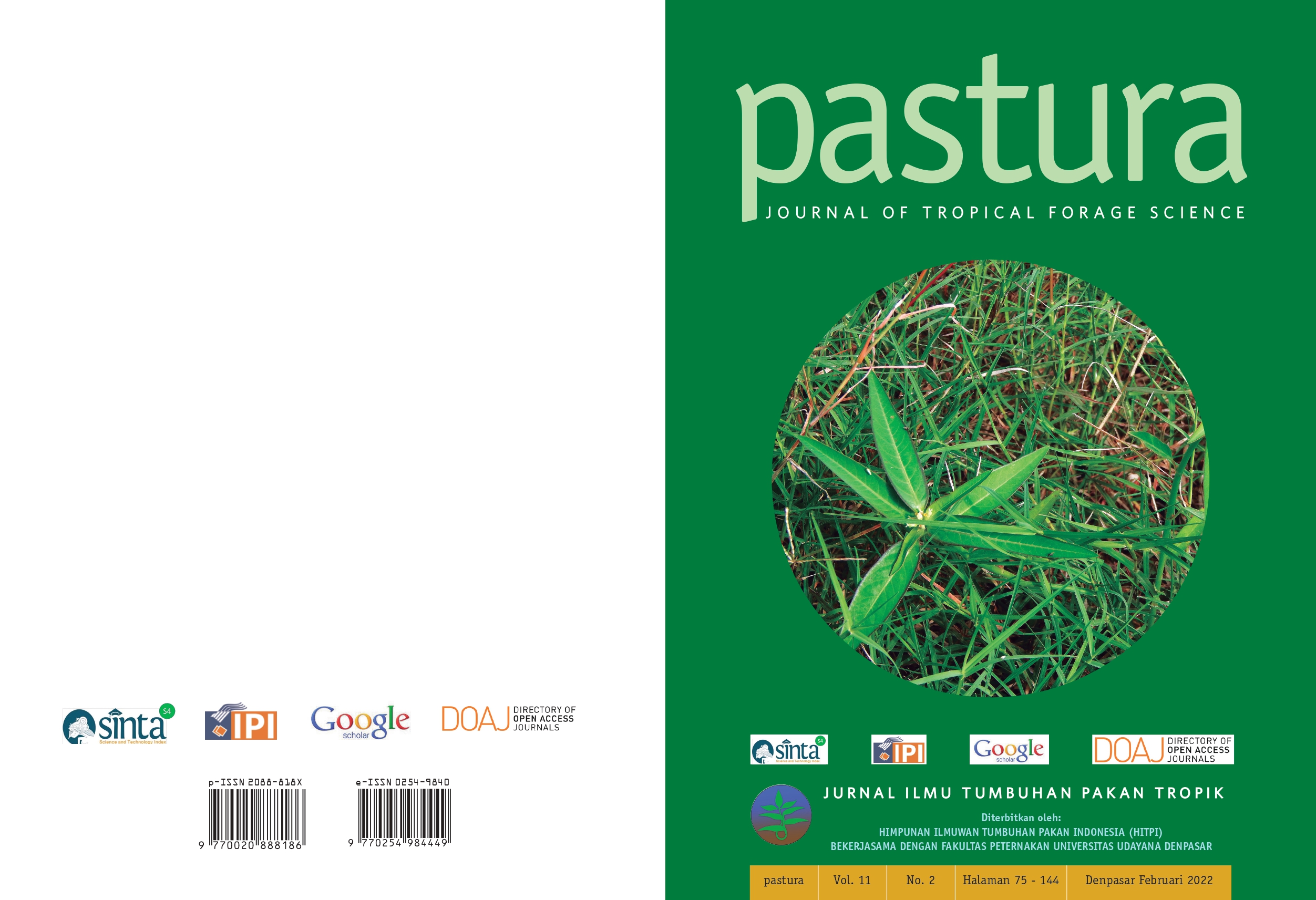RESPONSE OF ELEPHANT GRASS (Pennisetum purpureum) TO VARIOUS TYPES AND DOSAGES OF INORGANIC AND ORGANIC FERTILIZERS
Abstrak
The aim of the study was to examine the response of elephant grass (Pennisetum purpureum) to various types and dosages of inorganic and organic fertilizers and to obtain optimal doses of various types of fertilizers. The study used a completely randomized design with a factorial pattern of two factors. The first factor was the type of fertilizer (A = inorganic NPK; OP = factory organic; BO = bioorganic; BS = bio-slurry) and the second factor was the dose of fertilizer (D0 = without fertilizer; D1 = 100 kg N ha-1; D2= 200 kg N ha-1; D3 = 300 kg N ha-1). There were 16 treatment combinations and each treatment was repeated 3 times. The results showed that types of bioorganic fertilizer produced higher plant height and stem diameter than inorganic fertilizer. The types of bioorganic and bio-slurry fertilizers resulted in higher leaf dry weight, stem dry weight and total dry weight of forage compared to inorganic fertilizer. Fertilizer dose of 300 kg N ha-1 showed higher stem dry weight and total dry weight than without fertilizer treatment. It was concluded that the response of elephant grass (Pennisetum purpureum) to the application of bioorganic and bio-slurry fertilizers was better than that of inorganic and factory organic fertilizers. Dose of 300 kg of N ha-1 fertilizer increased the yield of elephant grass (Pennisetum purpureum), and there was no optimal dose of various types of fertilizers.
Keywords: fertilizer dose, organic, Pennisetum purpureum, type of fertilizer
##plugins.generic.usageStats.downloads##
Authors who publish with this journal agree to the following terms:
- All articles published by Pastura Journal Of Tropical Forage Science are made available under an open access license worldwide immediately. This means everyone has free and unlimited access to the full-text of all articles published in Pastura Journal Of Tropical Forage Science, and everyone is free to re-use the published material given proper accreditation/citation of the original publication. Open access publication is supported by authors' institutes or research funding agency by payment of a comparatively article processing charge for accepted articles (See Author Fees). Pastura Journal Of Tropical Forage Science publish articles under the Creative Commons Attribution License.
- Authors are able to enter into separate, additional contractual arrangements for the non-exclusive distribution of the journal's published version of the work (e.g., post it to an institutional repository or publish it in a book), with an acknowledgement of its initial publication in this journal.
- Authors are permitted and encouraged to post their work online (e.g., in institutional repositories or on their website) prior to and during the submission process, as it can lead to productive exchanges, as well as earlier and greater citation of published work (SeeThe Effect of Open Access).





